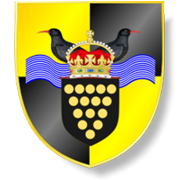MSN1781 Rules of the Road
The Merchant Shipping (Distress Signals and Prevention of Collisions) Regulations 1996
Notice to Owners, Masters, Skippers, Officers and Crews of Merchant Ships, Fishing Vessels, Pleasure Vessels, Yachts and Other Seagoing Craft.
This notice takes immediate effect and supersedes MSN M.1642/COLREG 1
Summary
This Notice and the Rules referred to in it are an integral part of the Merchant Shipping (Distress Signals and Prevention of Collisions) Regulations 1996, which came into force on 1 May 1996. These Regulations implement the Convention on the International Regulations for Preventing Collisions at Sea, 1972, as amended. They enhance safe navigation, by prescribing the conduct of vessels underway, specify the display of internationally-understood lights and sound signals and set out collision avoidance actions in close quarter situations. This notice incorporates amendments to the International Regulations for Preventing Collisions at Sea, 1972, up to and including those annexed to IMO Resolution A.910(22). In accordance with the Convention, the latest amendments come into force internationally on 29 November 2003.
Introduction
1. This Notice and the Rules referred to in it are an integral part of the Merchant Shipping (Distress Signals and Prevention of Collisions) Regulations 1996, which came into force on 1 May 1996. These Regulations implement the Convention on the International Regulations for Preventing Collisions at Sea, 1972, as amended.
Latest Amendments
2. This notice incorporates amendments to the International Regulations for Preventing Collisions at Sea, 1972, up to and including those annexed to IMO Resolution A.910(22).
3. The amendments include:
Extension of the General definitions of vessel to include Wing-In-Ground Craft (WIG) with amendment to rules 3, 18, 23 and 31
Note on the Application of the Regulations
4. The application of these Rules is limited through the Regulations, to the vessels or ships as defined in the Merchant Shipping Act 1995. Application to craft falling outside of this definition e.g. WIGs, personal water craft and others; will therefore be subject to a Maritime and Coastguard Agency (MCA) opinion of what it considers to be good conduct and practice by the; owners, operators and those in charge of such craft.
5. Extension of the Regulations to cover a broader range of vessel types by use of powers granted to the Secretary of State under the Railways and Transport Safety Act 2003, section 112; is currently under consideration. Important
Reminder
6. From a recommendation as a result of an investigation into a collision that occurred in the Dover Strait in 2002, mariners are reminded that sections II and III of the Steering and Sailing Rules must be strictly complied with. However, vessels are not prevented from taking sufficiently early action ahead of the point in time at which those sections of the Rules come into effect.
Revision of Action to avoid collision Rule 8;
Revision of Equipment for sound signals Rule 33
Revision to Sound signals in restricted visibility Rule 35; and Annexes I, Positioning and Technical Details of Lights and Shapes and III, Technical Details of Sound Signals.
Background
7. In these Regulations –
(1) The traffic separation schemes referred to in Rule 10(a) are the schemes listed in Notice to Mariners No 17 of the Annual Summary and marked “*” in the margin;
(2) The diagram mentioned in paragraph 7 of Annex I is the diagram specified in the Chromaticity Chart (1975) published by the International Illumination Commission (CIE); and
(3) The International Code of Signals referred to in paragraph 3 of Annex IV is published by the International Maritime Organization.
